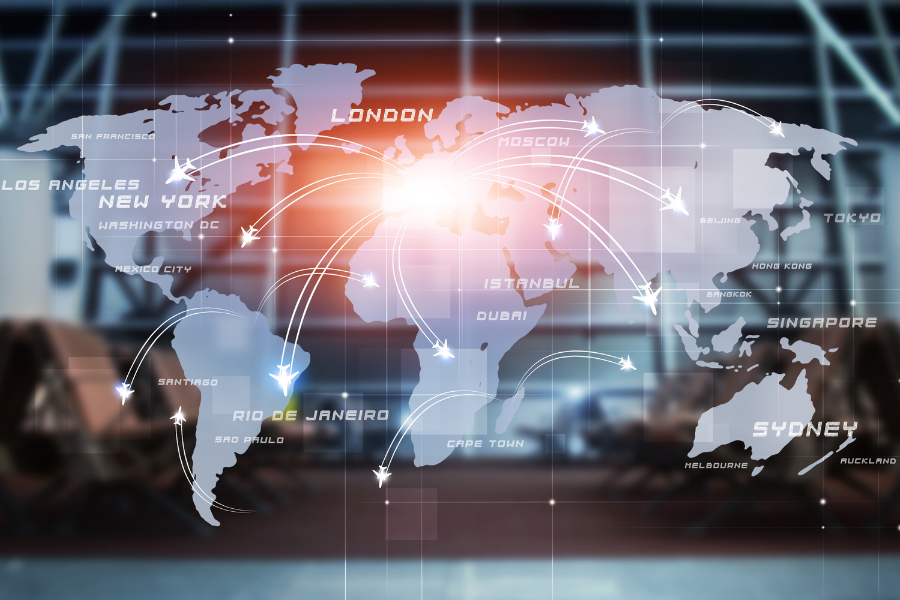The aviation sector, one of the hardest hit by the COVID-19 pandemic, is now slowly recovering.
The impact was massive: in 2020, the industry’s revenue was about $328 billion, only 40% of what it was the previous year, bringing it back to levels not seen since 2000. Recovery to pre-pandemic traffic levels isn’t expected until at least 2024.
As the sector rebounds, several key trends are emerging:
Leisure Travel Driving Recovery: With business travel slowed by the rise of remote work, leisure travel is leading the industry’s comeback. Leisure trips and visits to friends and relatives usually bounce back first in crises, and this pattern is repeating post-COVID-19. Business travel, in contrast, might only reach 80% of its pre-pandemic levels by 2024.
Changing Flight Economics: Airlines are reassessing how they operate, especially for long-haul flights. There’s a shift in pricing strategies due to decreased business travel. This might mean using larger aircraft for long-haul routes and adjusting cabin layouts to cater more to leisure travelers.
Debt and Government Role: To survive the pandemic, airlines accumulated over $180 billion in debt in 2020. This debt will likely lead to higher ticket prices and increased government involvement in the sector.
Diverse Airline Performances: The pandemic widened the performance gap among airlines. Some have adapted well by restructuring for efficiency, while others are lagging behind. This disparity might become more pronounced in the coming years.
Investing in Digitalization: Despite financial strains, airlines are advised to invest in IT and digitalization. This investment is key to enhancing customer experience and improving efficiency in operations.
Aircraft Market Oversupply: There’s currently an oversupply of aircraft due to pre-pandemic production increases. This situation presents opportunities for airlines to secure new aircraft or leases at lower costs.
Rising Importance of Air Freight: The cargo sector has become increasingly important, especially as e-commerce sales have spiked. With many passenger flights grounded during the pandemic, cargo yields rose significantly.
Towards Greener Travel: The future of travel is expected to be more environmentally friendly and efficient. Despite the debt burden, the industry is moving towards greener operations.
In this evolving landscape, the University of Information Technology and Management in Rzeszów, Poland, is well-placed to contribute significantly. Rzeszów, known as the „Aviation Valley,” is a hub for the aviation industry, with over 100 companies and a tradition of innovation and skilled labor. The presence of major industry players like Boeing emphasizes the region’s global significance.
The university’s aviation management program, unique in Poland for being taught entirely in English, is an asset in this environment. Students have the advantage of being in a region that’s not just historically rich in aviation but also at the forefront of its future. As the industry recovers and evolves, graduates from this program will find themselves well-equipped for promising careers in a sector that’s adapting to a post-pandemic world.
Referances
- McKinsey & Company – The Future of the Airline Industry After COVID-19:
- Dolina Lotnicza – About Us
- Wikipedia – Aviation Valley
- Polish Investment and Trade Agency – The Aviation Sector in Poland:
- fDi Intelligence – Poland’s Valley of the Wings Takes Off:
- Air Force Technology – Boeing Expands in Poland’s Aviation Valley with Distribution Site:



